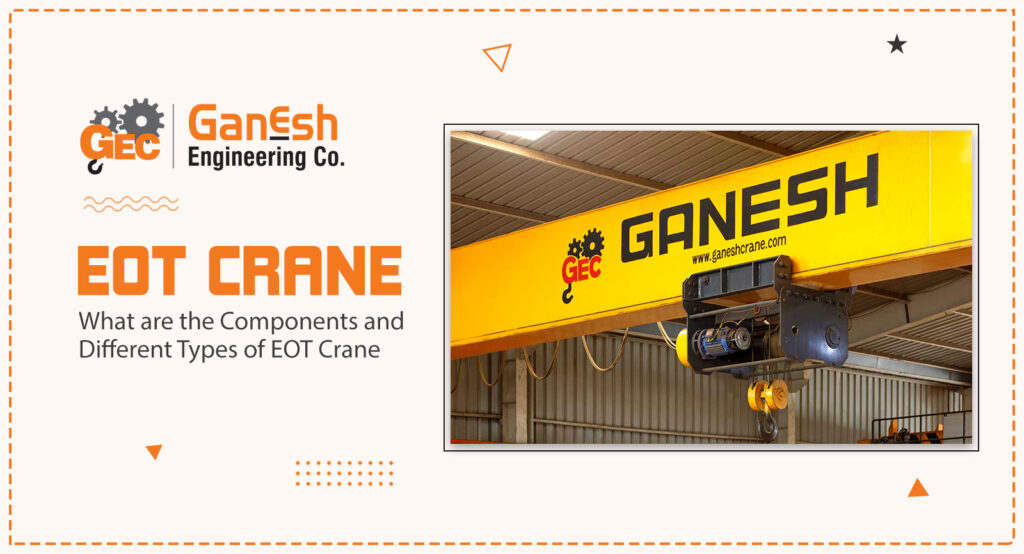
EOT crane are used in heavy lifting and construction sectors. These cranes are available in a variety of configurations to meet various purposes. Each type of crane is built to satisfy the specific needs of the users. In this article, we will look at several types of Electric Overhead Travel cranes.
Single Girder EOT Crane
The crane consists of a single bridge girder supported by two end trucks. It has a trolley hoist mechanism that runs along the bottom flange of the bridge girder.
Single girder cranes are utilized in work units when big materials need to be shifted or lifted. These cranes are only used for maintenance and manufacturing purposes. The major function of these cranes is to transport big goods rapidly and conveniently. These cranes are highly durable and capable of performing exceptionally effectively.
Double Girder EOT Crane
These cranes have a capability of 2 to 50 MT. Double girder cranes may be utilized for any big lifting application. These cranes’ hooks can be hoisted to greater heights than single girder cranes. These cranes may be utilized in both indoor and outdoor settings. This is one of the additional benefits of this type of crane.
Components of EOT cranes
An EOT crane consists of numerous critical components, including the hoist, trolley, bridge, columns, runway, end effectors, reinforced-steel cable, hook, master controllers, electrical control panel, DSL busbars, radio remote control, and pendant.
Hoist
The hoist provides lift in lifting systems by holding, elevating, or lowering the cargo with wire rope or chains. It is the crane’s most crucial component, and it must be able to support the maximum weight of the load.
Trolley
Trolleys support the hoist and travel across the crane bridge. Trolleys can be arranged to travel top-down or bottom-up, on a track or on a beam. The trolley moves the load horizontally.
Bridge
It is a key structural component of an EOT crane that links the runways and holds the hoists and trolleys, as well as a load-bearing component that spans the crane system’s breadth.
Columns
If the EOT crane support system is not part of the structure, it will require columns to support it. The height of your columns determines the amount of headroom and the maximum height of your lift.
Runway
The bridge runs along runways, which move the crane up and down bays.
End Effectors
End effectors are the “grab” component of the crane system. They are responsible for grasping and releasing the load.
Reinforced-steel cable
The boom and jib are supported by reinforced steel cable lines that extend from a winch behind the operator’s cab.
Hook
The load is supported by a hook that links to the hoist and end effector.
EOT crane have several uses and are mostly used in different industries. Electric overhead traveling cranes are equipment used in industrial production, transportation, and manufacturing operations.
If your business requires regular lifting and material handling, an EOT crane from Ganesh Cranes is an ideal choice for you.

